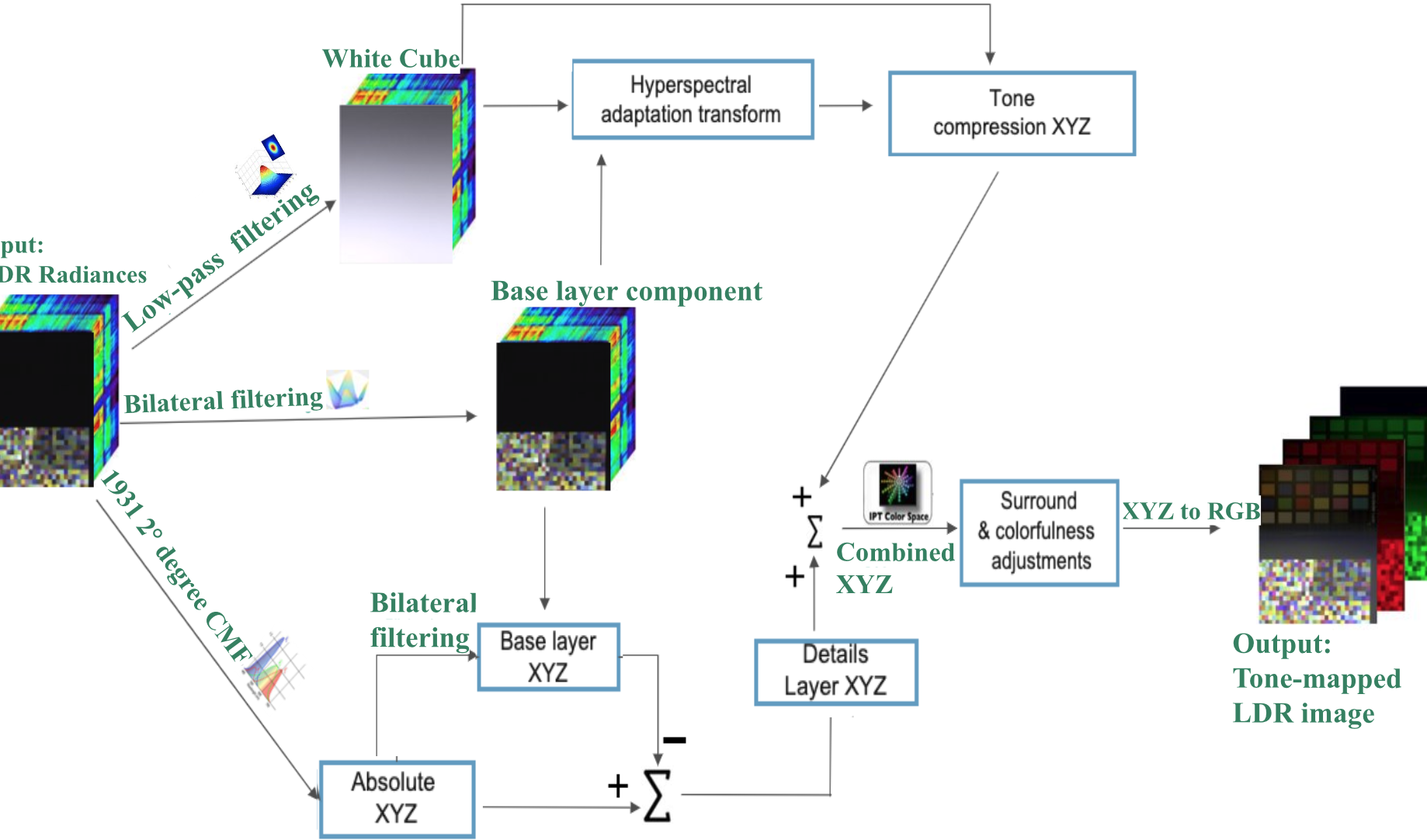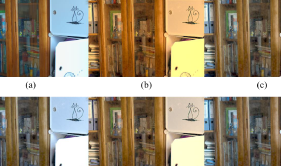
Low-light image enhancement is a hot topic as the low-light image cannot accurately reflect the content of objects. The use of low-light image enhancement technology can effectively restore the color and texture information. Different from the traditional low-light image enhancement method that is directly from low-light to normal-light, the method of low-light image enhancement based on multispectral reconstruction is proposed. The key point of the proposed method is that the low-light image is firstly transformed to the spectral reflectance space based on a deep learning model to learn the end-to-end mapping relationship from a low-light image to a normal-light multispectral image. Then the corresponding normal-light color image is rendered from the reconstructed multispectral image and the enhancement of the low-light image is completed. The motivation behind the proposed method is whether the low-light image enhancement through multispectral reconstruction will help to improve the enhancement performance or not. The verification of the proposed method based on the commonly used LOL dataset showed it outperforms the traditional direct enhancement methods, however, the underlying mechanism of the method is still to be further studied.
In the past, several research studies have highlighted the idea that spectral data produces better tone-accurate images. Inspired by these studies, this paper introduces the spectral image color appearance model titled SiCAM, designed for tone mapping an HDR hyperspectral radiance cube to a three-channel LDR image. It is to be noted that SiCAM is inspired by the iCAM06 image color appearance model, where we adapted the iCAM06 for hyperspectral input by embedding a spectral adaptation transformation, extending the existing chromatic adaptation transform (CAT) method. Additionally, we conducted a psychophysical experiment to evaluate the proposed model and the effectiveness of having spectral data instead of traditional three-channel HDR input, for HDR image rendering. The proposed model is also assessed in comparison to the performance of iCAM06 and the gamma tone mapping approaches. The subjective evaluation indicates that SiCAM either outperformed these methods in terms of both accurate color appearance and pleasantness or atleast generated comparable results. This also hints that the spectral information might be able to improve not only the acquisition capabilities but also display rendering. Due to the lack of openly available HDR hyperspectral datasets, we captured the HDR hyperspectral radiance images of four HDR scenes, which will be made publicly accessible.
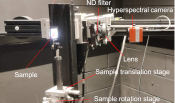
Gonioradiometry plays a fundamental role in understanding the scattering properties of materials. As light interacts with surfaces, its scattering behaviour varies across different incident angles, wavelengths, and surface characteristics. Gonioradiometric measurements offer a systematic approach to quantify these intricate scattering patterns, by means of the Bidirectional Scattering Distribution function. In this paper, a new approach is presented to quantify this Bidirectional Scattering Distribution Function, for which an existing measurement instrument has been enhanced by incorporation of a hyperspectral imaging device. The hyperspectral imaging system enables detailed spectral reflectance data collection for each pixel, paving the way for measuring samples where the reflectance properties vary along the surface. Challenges such as zooming and dynamic range constraints are addressed, with the paper detailing the design and evaluation of the system. The hyperspectral gonioradiometer offers promising avenues for future research and applications in visual appearance metrology and material characterisation.
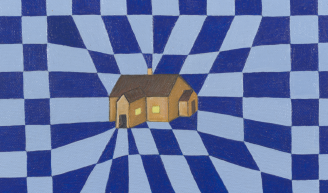
Multispectral imaging in contrast with hyperspectral imaging is a cheaper and more accessible method with a feasibly mobile setup. However, the restrained spectral resolution of multispectral images is a limitation that influences the applicability of this method in different fields. In this study, we tried to answer the question of whether multispectral images are suitable enough to be used in the spectral unmixing task. For this specific application, we explore spectral unmixing of an oil painting to obtain pigment maps. We observe that the performance of the multispectral imaging system in the pigment unmixing task is significantly influenced by two key factors: the number of bands in the multispectral imaging system and the spectral range covered by these bands in relation to the spectral features of the pigments present in the spectral library.
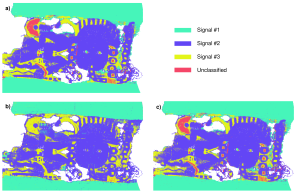
A practical workflow to capture and process hyperspectral images in combined VNIR-SWIR ranges is presented and discussed. The pipeline demonstration is intended to increase the visibility of the possibilities that advanced hyperspectral imaging techniques can bring to the study of archaeological textiles. Emphasis is placed on the fusion of data from two hyperspectral devices. Every aspect of the pipeline is analyzed, from the practical and optimal implementation of the imaging setup to the choices and decisions that can be made during the data processing steps. The workflow is demonstrated on an archaeological textile belonging to the Paracas Culture (Peru, 200 BC - 100 AD ca.) and displays an example in which an inappropriate selection of the processing steps can lead to a misinterpretation of the hyperspectral data.

We consider hyperspectral phase/amplitude imaging from hyperspectral complex-valued noisy observations. Block-matching and grouping of similar patches are main instruments of the proposed algorithms. The search neighborhood for similar patches spans both the spectral and 2D spatial dimensions. SVD analysis of 3D grouped patches is used for design of adaptive nonlocal bases. Simulation experiments demonstrate high efficiency of developed state-of-the-art algorithms.
